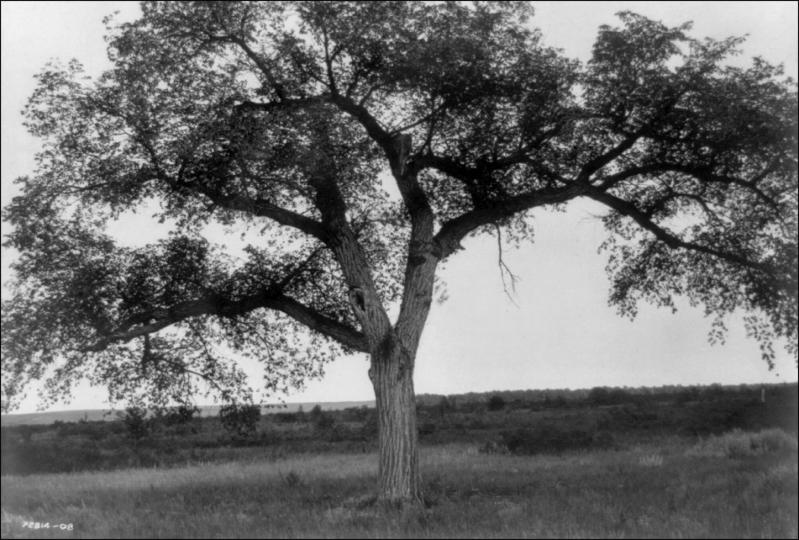The Los Angeles wildfires destroyed nearly every building and human-built object they encountered, but some trees survived. Biologists provided explanations, which centered on trees’ storage of water, but residents were amazed. Moreover, the trees’ survival gave them hope. If the trees could live on, so could they.
When I learned how the trees helped the residents, I thought, “If only our society in general appreciated how much they give to the world.” They provide homes for wildlife, absorb pollutants, clean water, and prevent soil erosion. By absorbing carbon dioxide, they mitigate global warming. In the process, they release a significant amount of the oxygen that animals (including human beings) breathe. Indeed, land animals might not even exist if it weren’t for the oxygen trees provide. As the Scottish poet John Wright wrote, “every time you breathe in / thank a tree.”
But efforts to protect trees have frequently failed. Consider old-growth forests, those over 120 years old. They are especially valuable in the fight against global warming because they store considerable carbon dioxide, keeping it out of the atmosphere. In 2022 then-President Biden directed the U.S. Forest Service to create a plan to limit the logging of these forests on federal lands. But the plan encountered resistance, and in January 2025 the Forest Service shelved it. In March, President Trump told the service to expand the timber harvesting.
Trees of all ages would meet a better fate if our society had more passionate feelings for them. But whereas some Indigenous tribes and ancient societies worshiped trees, ours typically views them as physical things that, while attractive, are quite disposable. If homeowners want room for a patio or an addition, they have the trees removed.
How can we promote deeper feelings toward trees? I suggest we direct our attention to the one set of people who are spontaneously enthusiastic about them: children.
A detailed picture of children’s attraction to trees emerged from two studies in the 1970s. Two researchers, Roger Hart and Robin Moore, observed children who had access to lush natural settings — Hart in a rural New England town, Moore in a nature area of a Berkeley, Calif., schoolyard. The children loved to climb trees, build tree houses in their branches, and create model towns in the soft dirt near their roots. They sat under them to relax and think and felt strong bonds with particular trees. Trees brought them peace and comfort.
Such experiences can have a lasting impact. Louise Chawla, a psychologist, and others have found that adults who try to protect the environment usually trace their motivation to their enjoyment of nature in childhood and adolescence. They view these positive experiences as more influential than anything they learned about the environment in school or from TV or the media. The only factor that comes close in importance is a family member’s confirmation that nature is precious.
Over the last half-century, however, children’s access to nature has shrunk. Woods and meadows have given way to manicured landscapes, malls, and parking lots. Children now spend most of their free time indoors, watching TV, surfing the internet, and playing video games. I doubt that many spend enough time in nature to develop deep affection for it — the kind of affection that will motivate them to protect it in adulthood.
Still, change might be in the air. Health professionals are warning about addiction to screens, and there is a budding interest in giving children more exposure to nature. I hope this interest grows into a movement and many adults will take part in it. They can take children to parks, woods, and nature centers. They also can just walk with children around neighborhoods and investigate the trees and life forms they see.
Chawla notes that adults are often most helpful when they accompany children for the sake of their safety while giving them freedom to initiate their explorations. I bet most children will enjoy these outings, and many will develop lasting love of trees and the natural world.
I realize we might not be able to wait for a new generation of nature-loving children to grow up and protect the biosphere. The threats may be too immediate. But we don’t have to pin all our hopes on children themselves. As Lillian Weber, an educator, emphasized, grown-ups can learn from them. They can pick up children’s enthusiasm and attitudes.
An example of this process occurred when Narda Nelson and Denise Hodgins ran a forest preschool program in Canada. The adults observed that the children gave trees names like “Grandma Tree” and “Waiting Log.” After this, one teacher said, “I can’t look at trees the same way anymore. I find it harder and harder to think about trees in general terms. We know some of these trees as individuals!”
I am raising the possibility, then, that adults who accompany children in nature activities will come to share the children’s attitudes. These adults will then be motivated to protect trees and the environment. Inspired by children, they might raise new banners for conservation.
William Crain is a professor emeritus of psychology at the City College of New York and a part-time Montauk resident.

